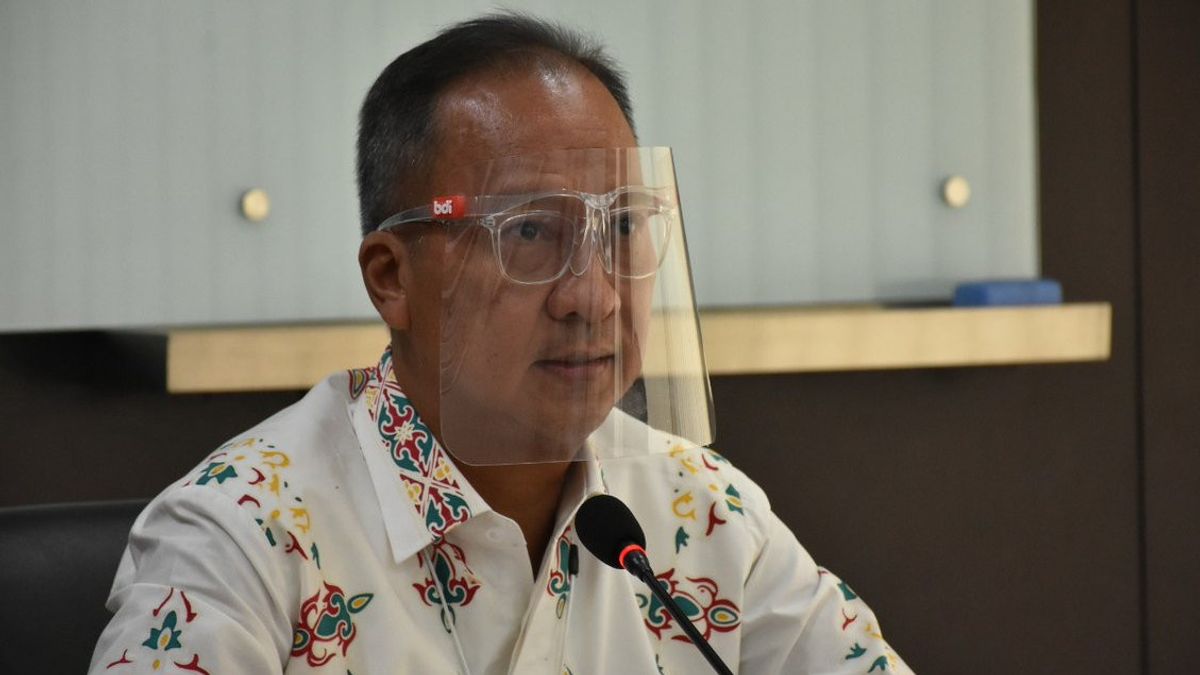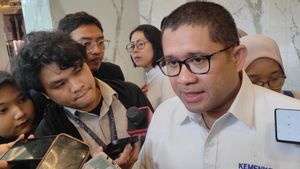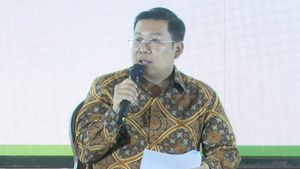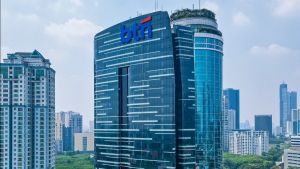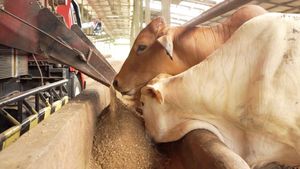JAKARTA - Minister of Industry Agus Guniwang Kartasasmita said Indonesia's manufacturing industry sector during the seven years of Joko Widodo's (Jokowi) administration played an important role. In fact, said Agus, the sector is the main driver and support for the national economy.
"The important role of the industrial sector can be seen, among other things, from the realization of investment in the manufacturing industry sector, which in the first period (2015-2019) penetrated a total value of IDR 1.280 trillion with an average annual investment value of IDR 250 trillion. This first year is even greater than the investment value accumulated for 10 years in the period 2005-2014," he said in a written statement, quoted Wednesday, October 27.
In the second period, Agus said, the realization of investment in the manufacturing sector in 2020 was recorded at IDR 270 trillion. This figure is higher than the average value of the previous period, even though the industrial sector received a hard hit from the COVID-19 pandemic.
"Meanwhile, in Semester I of 2021, the realization of investment in the manufacturing sector has been calculated at IDR 170 trillion and is estimated to continue to increase in line with the improvement of several other economic indicators," he said.
Meanwhile, Agus said, in terms of exports, the contribution of the manufacturing industry sector to national exports continued to increase from USD 108.6 billion in 2015 to USD 127.4 billion in 2019.
During that period, Agus continued, the average value of the export contribution of the manufacturing sector was around 75 percent of the total national exports per year. The value of this contribution is far greater than the contribution of manufacturing exports in the previous government period (2000-2014) which only touched a figure below 70 percent of total national exports.
"The export contribution of the manufacturing industry sector in the first year of Jokowi's second administration (in 2020) actually increased to USD 131.1 billion amid the crush of the COVID-19 pandemic. The value of this manufacturing export represents 80.3 percent of national exports in 2020 and produces a trade balance surplus of USD 21.7 billion," he said.
Agus said the trade balance surplus itself will continue until September 2021 of USD 4.37 billion, which is a surplus for 17 consecutive months since May 2020.
"In the January-August 2021 period, the export value of the manufacturing sector has reached around USD 115.13 billion," he explained.
The manufacturing sector's achievements in investment and exports have accompanied the manufacturing industry sector's contribution to state revenues and the contribution to the formation of the National GDP which continues to increase and is the highest compared to other economic sectors.
"Taxes from the manufacturing sector contributed 28 percent on average from 2014 to 2020. Meanwhile, excise revenues from the industrial sector contributed 95 percent of the total national excise revenue," he said.
The manufacturing GDP growth rate in the 2015-2019 period has consistently been in the range of close to 5 percent per year. The contribution of the manufacturing sector to the national GDP in 2015 touched a value of IDR 2.100 trillion and continued to rise to IDR 2.783 trillion in 2019.
In the second period of government, the contribution of the manufacturing sector fell slightly to IDR 2.760 trillion in 2020 due to the impact of the COVID-19 pandemic which not only hit Indonesia but also all countries in the world. Due to the pressure of the pandemic, the manufacturing industry sector grew minus 2.52 percent in 2020.
"This is the second time in the history of the Indonesian manufacturing industry sector to experience negative growth after minus 11.5 percent due to the 1997 crisis. Growth in the manufacturing industry sector returned to life in 2021, with a significant increase in the growth rate in the second quarter of 6.91 percent ( yoy), in line with national economic growth which also rose by 7.07 percent (yoy)," he said.
Purchasing Manager's Index (PMI) Indonesia
At the beginning of the first period of Jokowi's administration, Agus said, Indonesia's manufacturing PMI was below 50 points throughout 2015 which shows the lack of enthusiasm for activity in the industrial sector as a result of depressed export performance due to global economic conditions.
However, Agus continued, in the following years the government's economic policies were able to make the Indonesian Manufacturing PMI continue to move until it touched an expansive level (above 50 points). The average value of the Indonesian Manufacturing PMI was at 50.08 in 2017 and increased to 50.9 in 2018.
However, the US-China trade war which continued with the COVID-19 pandemic in the 2019-2020 period pressured the Manufacturing PMI to the level of 49.7 in 2019 and deeply to its lowest level in April 2020 at 27.5 when the Large Scale Social Restriction (PSBB) volume I was implemented in the capital city which made operations and industrial activities almost paralyzed.
Then, Agus said, Indonesia's manufacturing PMI has returned to an expansive level since November 2020 and continues to strengthen until June 2021. In fact, in 2021 Indonesia's Manufacturing PMI scored the highest record number in history for three consecutive months, namely 53.2 in 2017 in March, 54.6 in April, and 55.3 in May.
"However, along with increasingly controlled conditions and the full reopening of industrial activities and supported by the adaptability of the industrial sector that has been developed previously, the Indonesian Manufacturing PMI returned to an expansive level at 52.2 in September 2021," he said.
The English, Chinese, Japanese, Arabic, and French versions are automatically generated by the AI. So there may still be inaccuracies in translating, please always see Indonesian as our main language. (system supported by DigitalSiber.id)
